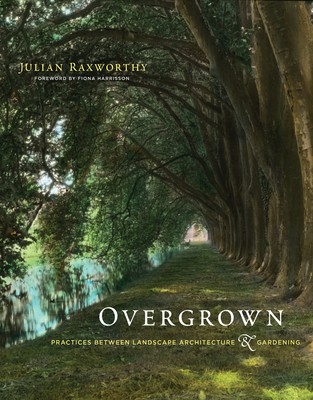
- We will send in 10–14 business days.
- Author: Julian Raxworthy
- Publisher: MIT Press
- ISBN-10: 0262547120
- ISBN-13: 9780262547123
- Format: 17.8 x 22.9 x 3.3 cm, softcover
- Language: English
- SAVE -10% with code: EXTRA
Reviews
Description
A call for landscape architects to leave the office and return to the garden.Addressing one of the most repressed subjects in landscape architecture, this book could only have been written by someone who is both an experienced gardener and a landscape architect. With Overgrown, Julian Raxworthy offers a watershed work in the tradition of Ian McHarg, Anne Whiston Spirn, Kevin Lynch, and J. B. Jackson.
As a discipline, landscape architecture has distanced itself from gardening, and landscape architects take pains to distinguish themselves from gardeners or landscapers. Landscape architects tend to imagine gardens from the office, representing plants with drawings or other simulations, whereas gardeners work in the dirt, in real time, planting, pruning, and maintaining. In Overgrown, Raxworthy calls for the integration of landscape architecture and gardening. Each has something to offer the other: Landscape architecture can design beautiful spaces, and gardening can enhance and deepen the beauty of garden environments over time. Growth, says Raxworthy, is the medium of garden development; landscape architects should leave the office and go into the garden in order to know growth in an organic, nonsimulated way.
Raxworthy proposes a new practice for working with plant material that he terms "the viridic" (after "the tectonic" in architecture), from the Latin word for green, with its associations of spring and growth. He builds his argument for the viridic through six generously illustrated case studies of gardens that range from "formal" to "informal" approaches--from a sixteenth-century French Renaissance water garden to a Scottish poet-scientist's "marginal" garden, barely differentiated from nature. Raxworthy argues that landscape architectural practice itself needs to be "gardened," brought back into the field. He offers a "Manifesto for the Viridic" that casts designers and plants as vegetal partners in a renewed practice of landscape gardening.
EXTRA 10 % discount with code: EXTRA
The promotion ends in 15d.19:42:24
The discount code is valid when purchasing from 10 €. Discounts do not stack.
- Author: Julian Raxworthy
- Publisher: MIT Press
- ISBN-10: 0262547120
- ISBN-13: 9780262547123
- Format: 17.8 x 22.9 x 3.3 cm, softcover
- Language: English English
Addressing one of the most repressed subjects in landscape architecture, this book could only have been written by someone who is both an experienced gardener and a landscape architect. With Overgrown, Julian Raxworthy offers a watershed work in the tradition of Ian McHarg, Anne Whiston Spirn, Kevin Lynch, and J. B. Jackson.
As a discipline, landscape architecture has distanced itself from gardening, and landscape architects take pains to distinguish themselves from gardeners or landscapers. Landscape architects tend to imagine gardens from the office, representing plants with drawings or other simulations, whereas gardeners work in the dirt, in real time, planting, pruning, and maintaining. In Overgrown, Raxworthy calls for the integration of landscape architecture and gardening. Each has something to offer the other: Landscape architecture can design beautiful spaces, and gardening can enhance and deepen the beauty of garden environments over time. Growth, says Raxworthy, is the medium of garden development; landscape architects should leave the office and go into the garden in order to know growth in an organic, nonsimulated way.
Raxworthy proposes a new practice for working with plant material that he terms "the viridic" (after "the tectonic" in architecture), from the Latin word for green, with its associations of spring and growth. He builds his argument for the viridic through six generously illustrated case studies of gardens that range from "formal" to "informal" approaches--from a sixteenth-century French Renaissance water garden to a Scottish poet-scientist's "marginal" garden, barely differentiated from nature. Raxworthy argues that landscape architectural practice itself needs to be "gardened," brought back into the field. He offers a "Manifesto for the Viridic" that casts designers and plants as vegetal partners in a renewed practice of landscape gardening.


Reviews